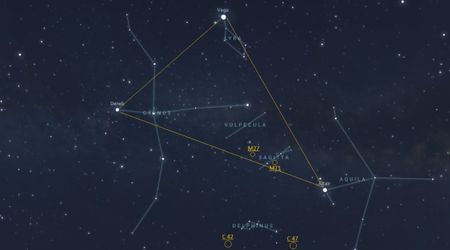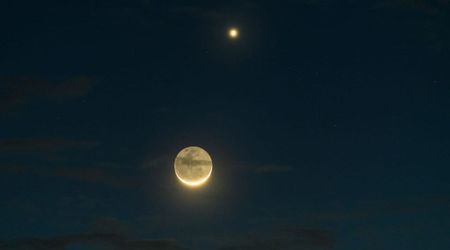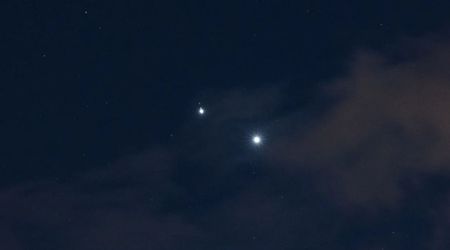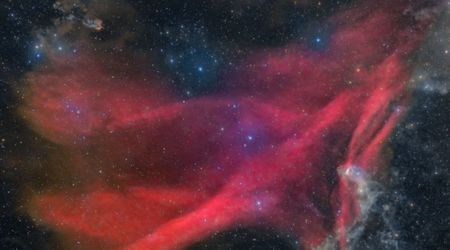All you need to know before spotting Ophiuchus—the Serpent Bearer—constellation in July's night sky

As July unfolds, a prominent celestial display awaits observers: Ophiuchus, also known as the Serpent Bearer. This ancient constellation, steeped in Greek mythology, promises a wealth of celestial wonders for those gazing skyward, according to the Constellation Guide.

Ophiuchus, which translates from Greek as "the serpent bearer," is historically linked to Asclepius, the renowned healer of Greek myth. Cataloged by the Greek astronomer Ptolemy in the 2nd century CE, it is sometimes referred to by its Latin name, Serpentarius. The constellation typically depicts a figure clutching a serpent, represented by the adjacent Serpens constellation, which Ophiuchus divides into two distinct sections: Serpens Caput (the serpent's head) and Serpens Cauda (the serpent's tail). Despite its position crossing the ecliptic, Ophiuchus remains outside the traditional Zodiac family, belonging instead to the Hercules family of constellations.
Ranking as the 11th largest constellation, Ophiuchus spans an impressive 948 square degrees and is among the 15 constellations situated in the celestial equator. Observable from latitudes between +80 degrees and -80 degrees, its celestial neighbors include Aquila, Hercules, Libra, Sagittarius, Scorpius, and Serpens. The constellation is a treasure trove for astronomers, featuring notable stars like Rasalhague (Alpha Ophiuchi), its brightest star with an apparent magnitude of 2.08, and Barnard's Star.

Deep-sky objects abound, including Kepler's Supernova, the Twin Jet Nebula, the Little Ghost Nebula, various dark nebulae such as Barnard 68, the Pipe Nebula, the Snake Nebula, the Cosmic Bat Nebula, and the Dark Horse Nebula. Additionally, Ophiuchus hosts seven Messier objects: M9, M10, M12, M14, M19, M62, and M107, all globular clusters. The constellation also contains seven stars with confirmed exoplanets. Adding to its allure, Ophiuchus is the radiant point for four meteor showers: the Ophiuchids, the Northern May Ophiuchids, the Southern May Ophiuchids, and the Theta Ophiuchids, providing additional opportunities for celestial observation.

A unique aspect of Ophiuchus is its curious relationship with the Zodiac. The ecliptic, the Sun's apparent path across the sky, courses directly through this constellation. For a period each year, specifically from November 30 to December 18, the Sun can be found within the boundaries of Ophiuchus. This astronomical fact has sparked discussions about its potential inclusion as a 13th zodiacal sign, as per Space.com.
Historically, ancient astrologers opted for a 12-sign zodiac, with each sign neatly occupying 30 degrees of the sky's 360-degree circle. However, astronomical constellation boundaries vary significantly in size; for instance, Virgo is vast, while Aries is comparatively small. Incorporating Ophiuchus into the zodiac would disrupt the established astrological framework, altering each sign's allocated span from a precise 30 degrees to approximately 27.692 degrees.

Despite the Sun's passage through Ophiuchus, it remains excluded from the Zodiac in favor of Scorpius. Located south of Ophiuchus, Scorpius, the scorpion, is a far more luminous and recognizable star pattern. While the Sun spends less time within Scorpius's borders compared to Ophiuchus, the latter ultimately defers its potential zodiacal membership to the more prominent scorpion.
The constellation's most enduring mythical association is with Asclepius, son of the god Apollo. According to Greek legend, Asclepius possessed extraordinary healing abilities, even the power to restore the dead. His knowledge of resurrection stemmed from observing a snake revive another with special herbs. This occurred after King Minos's son, Glaucus, drowned in a honey jar. Asclepius initially killed a snake near the body, only to witness another snake use an herb to miraculously bring the first one back to life. Emulating this, Asclepius applied the same herb to Glaucus, successfully resurrecting the prince, as mentioned on Constellation Guide.









